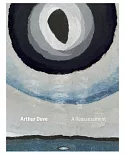Paul Gauguin was introduced into the Impressionist circle by Camille Pissarro and contributed major works to five of the eight Impressionist exhibitions between 1879 and 1886. During these
years he transformed himself from a banker-stockbroker into a professional artist and from a family man into a solitary searcher for artistic, moral, and spiritual truths. Yet this vital
period of Gauguin’s life has usually been dismissed as an awkward prelude to his brilliant career as an anti-Impressionist. This handsomely illustrated book reconsiders Gauguin’s
apprenticeship as an Impressionist and reassesses his contributions to the movement through the extraordinarily subtle and beautiful paintings, sculpture, and ceramic works he created during
the years before 1887.Richard R. Brettell and Anne-Birgitte Fonsmark argue that Gauguin’s Impressionist paintings compare in quality to those of Sisley, Morisot, or Cassatt and that as a
sculptor he was second only to Degas. His sculptures and ceramics were even more searching and radical than his early paintings and are crucial to the understanding of his development.
Gauguin grappled with the thorniest issues debated by the French avant-garde, the authors contend, and no member of the Impressionist group created works as enigmatic or as wideranging, both
artistically and emotionally.





















